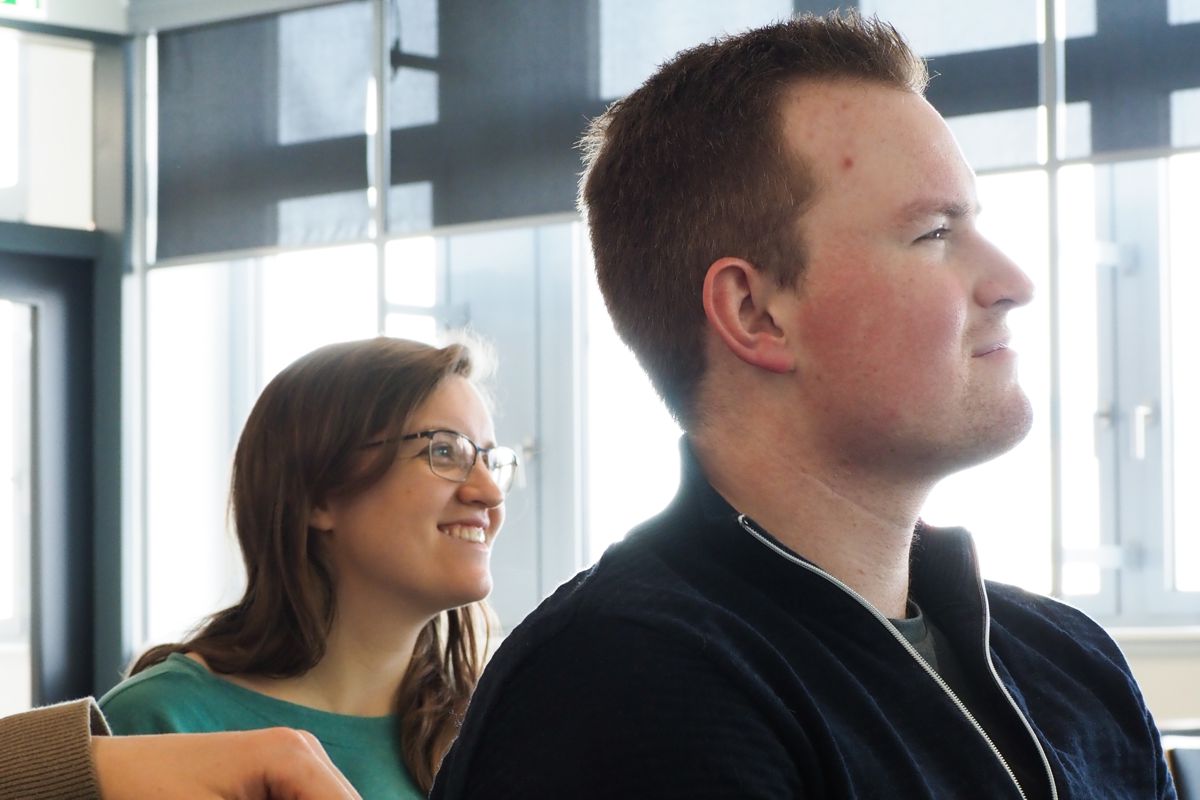 |
M. Sc. Erik EngelhardtRoom: C-01.021 (ZEVS)Kaiserstraße 2, 24143 Kiel, Germany Phone: +49 431 880-6132 E-mail: ORCID: |
|---|
Research: Magnetoelectric Sensor Systems for Cardiologic Applications
Current standard electrocardiography is a useful and easily applicable method that has been in clinical use for more than hundred years. However, it is hampered by low spatial resolution. Thus, precise electro-anatomical mapping of arrhythmias still has to be conducted by invasive catheterization. The main long-term objective of this project is to answer the question whether invasive mapping of arrhythmic substrates (current standard) can be replaced by a non-invasive alternative, namely analyses using signals obtained from ME sensors combined with electric measurements.
We will thus investigate if a multi-channel combined ECG/MCG (electrocardiogram/magnetocardiogram) approach allows for reliable non-invasive localization of the origin of cardiac arrhythmias. This is becoming even more important, as recently stereotactic body radiation therapy was successfully applied for ablation of ventricular tachycardia, promising a completely non-invasive way to cure arrhythmias in the future.
To perform the required measurements with a multitude of magnetic (both ME sensors originating from this CRC and already established systems) as well as electric sensors, individual real-time signal-to-noise ratio estimations of all involved sensors will be investigated that permit optimal sensor placement, sensor signal combination, and parameter extraction. An appropriate automatic signal quality analysis should guarantee a minimum recording time for patients. To answer these research questions, forward modelling and a solution of the inverse problem is necessary. To evaluate the accuracy and clinical utility of this approach, we plan to compare it with results from electrophysiological studies (current standard) in 3 different groups of patients:
- premature ventricular contractions,
- idiopathic ventricular tachycardia,
- ischemic ventricular tachycardia.
For each patient, magnetic resonance imaging (MRI) and computed tomography (CT) for anatomy and electric and magnetic measurements will be performed.
Related topics:
- Kalman Filter
- Machine learning
- Sensor fusion
- Biomagnetic modelling
- Biomagnetic measurements
Further interests:
- Software Engineering
- Real-time digital signal processing
- Supervised machine learning
- Reinforcement learning
Short CV
| Time span | Details |
|---|---|
| 2020 - current | Research assistant at the Christian-Albrechts-Universität zu Kiel, Kiel, Germany |
| 2020 - 2020 | Working Student at Basler AG, Ahrensburg, Germany |
| 2019 - 2020 | M.Sc. in Microelectronic Systems at the Hamburg University for Applied Sciences, Hamburg, Germany |
| 2019 - 2020 | Embedded Engineer at Siemens AG, Hamburg, Germany |
| 2017 - 2019 | Working Student at Siemens AG, Hamburg, Germany |
| 2014 - 2019 | B.Sc. in Electrical Engineering at the Hamburg University for Applied Sciences, Hamburg, Germany |
| 2014 - 2017 | Vocational Training: Electronics Technician for Automation Technology at Siemens Professional Education, Hamburg, Germany |
Publications
{loadpapers:authors=88:categories=1,2,3,4,5,6,7,8,10:years=any:months=any:lab=any:style=olreversed}

 Visit of the Hans Böckler Foundation
Visit of the Hans Böckler Foundation